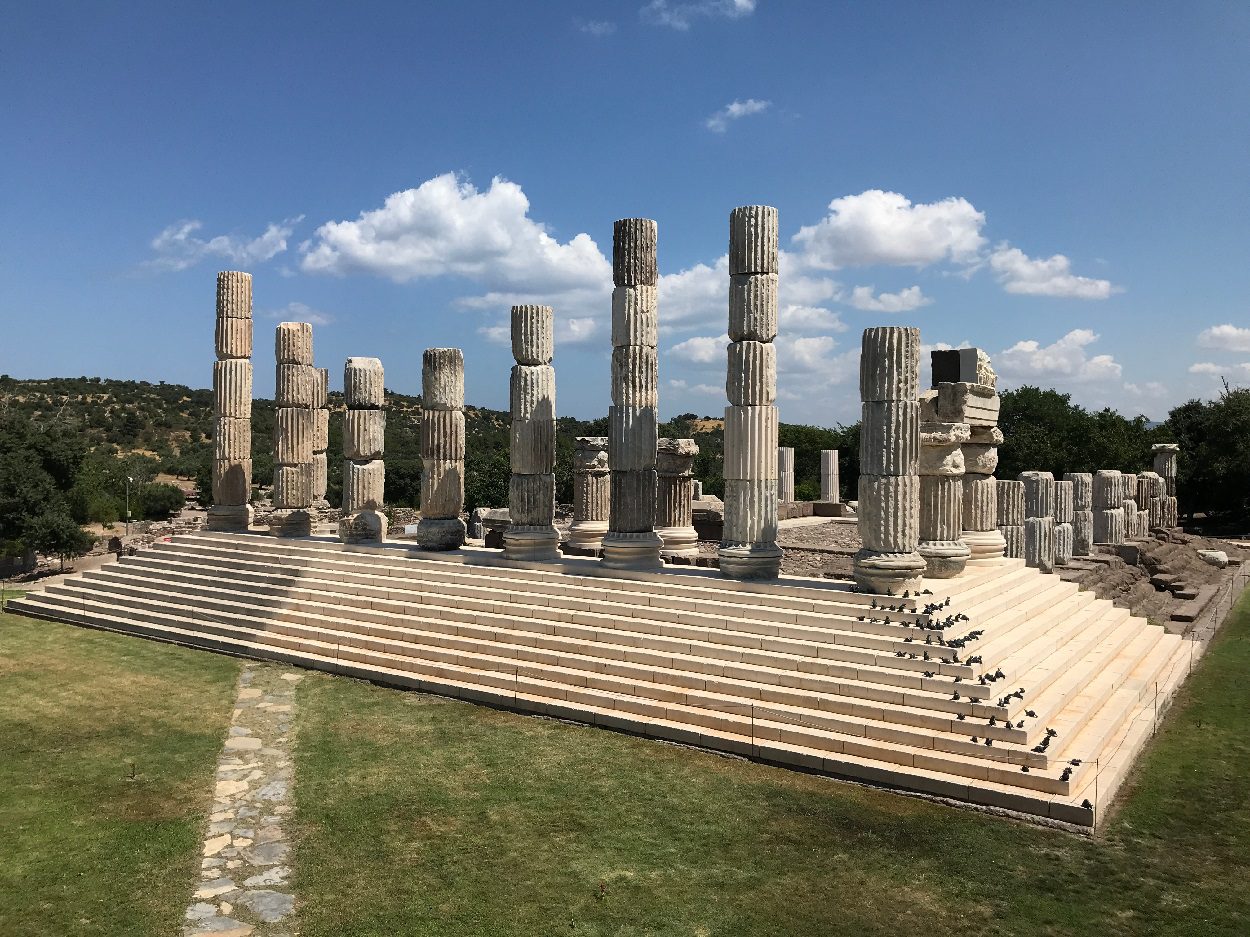Hamaxitus was an ancient Greek city in the Troad region of Anatolia, located in the present-day village of Gülpınar in Turkey’s Çanakkale Province.
Hamaxitus was first settled by Mytilenaeans in the 8th or 7th centuries BC, emerging as one of the Actaean cities in the Troad which Athens annexed from Mytilene following the end of the Mytilenean revolt in 427 BC.
The city became an important religious centre following the construction of the Apollon Smintheion sanctuary and the Temple of Apollon Smintheus, which was built around 150 BC in dedication to Apollo Smintheus, a byname of Apollo associated with mice and rats.
Recent excavations conducted by the Çanakkale Onsekiz Mart University’s Department of Archaeology (ÇOMÜ) have uncovered a 2,000-year-old monumental tomb from the Roman period next to the Apollon Smintheus Sanctuary.

The tomb contains the burials of more than 10 individuals, for which the researchers have identified the skeletal remains of children and adults which were found disturbed.
According to the researchers, the tomb was likely commissioned by high status Roman elite, providing new insights into Roman burial practices at Hamaxitus and the continued influence that the sanctuary held during the Roman period.
Speaking to Daily Sabah, Hüseyin Yaman, a member of the excavation team said: “We aim not only to acquire information about the burial traditions of individuals and communities that once existed here but also to contribute to the delineation of the distribution area of sacred structures, or in other words, to determine the boundaries of the sacred area.
“In line with this goal, in the excavations conducted at three different points, we revealed remnants of two tombs alongside foundational remains of some structures. Based on the artifacts found in the only room that seemed to have survived with intact foundations in the monumental tomb, we estimate its origin to be approximately 2,000 years ago, around the first century AD,” added Yaman.
Header Image Credit : Shutterstock





